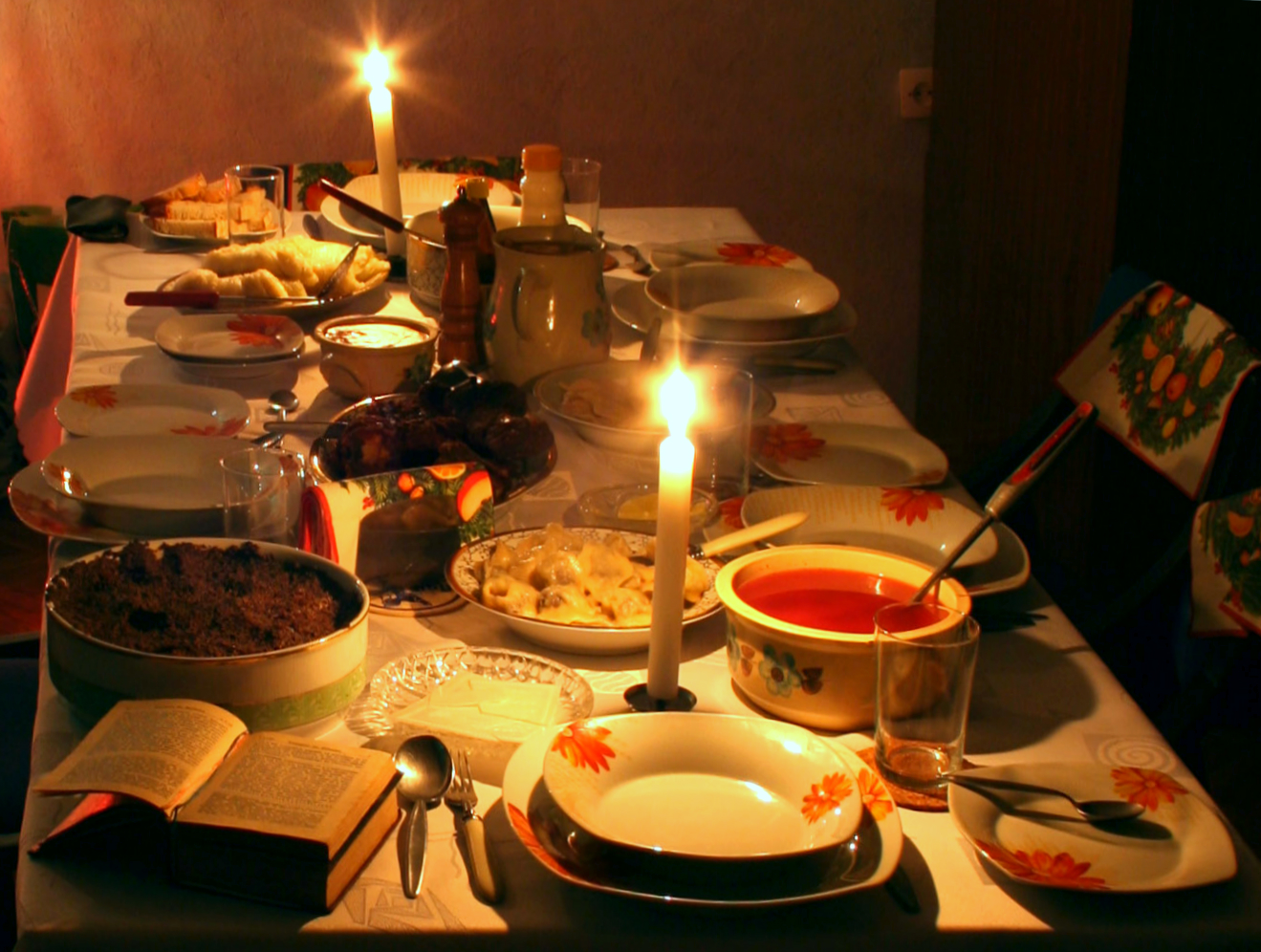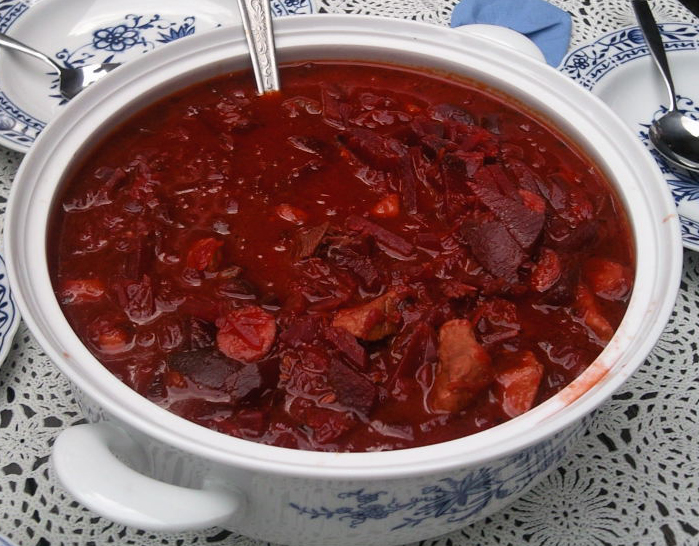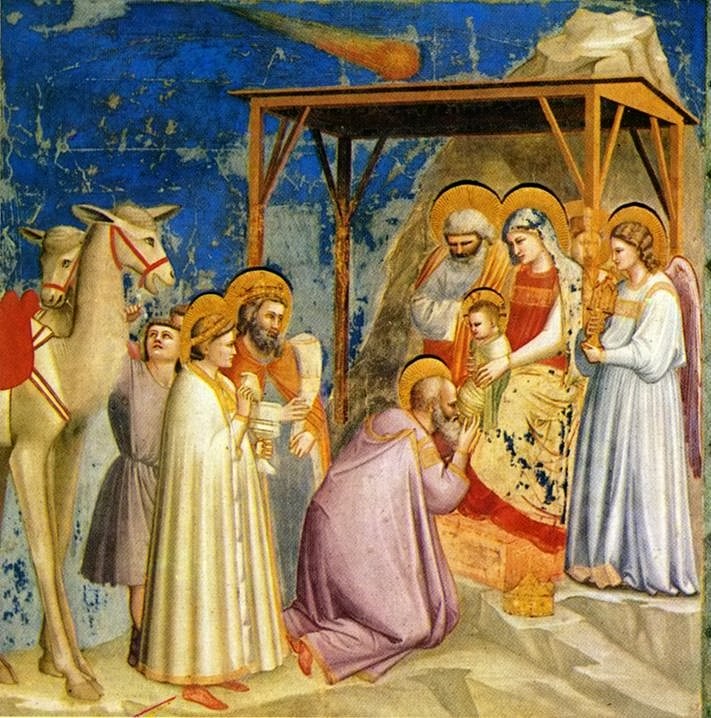|
Wigilia
Wigilia () is the traditional Christmas Eve vigil supper in Poland, held on December 24. The term is often applied to the whole of Christmas Eve, extending further to PasterkaŌĆömidnight Mass, held in Roman Catholic churches all over Poland and in Polish communities worldwide at or before midnight. The custom is sometimes referred to as "wieczerza" or "wieczerza wigilijna", in Old Polish meaning evening repast, linked to the late church service, ''Vespers'' from the ''Latin''. The word ''Wigilia'' derives from the Latin ''vigil''. The associated feasting follows a day of abstinence and traditionally begins once Star of Bethlehem, the First Star has been sighted. Christmas is also sometimes called "''Gwiazdka''", "little star". Traditions and customs Children usually decorate the Christmas tree. Sometimes a handful of hay is placed under the tablecloth of the dining table to symbolise Jesus's birth in a manger. One old tradition states that when children playfully remove a piece ... [...More Info...] [...Related Items...] OR: [Wikipedia] [Google] [Baidu] |
Pasterka
Pasterka is a Midnight Mass#Time of celebration of Mass, midnight mass celebrated by Roman Catholic Church, Roman Catholics Christmas in Poland, during Christmas between December 24 and 25 Religion in Poland, across Poland. A close translation of the name would be the "Shepherds' Mass" (literally: 'that which belongs to the shepherds' in Polish language, Polish), in reference to the Bible, Biblical shepherds, who were visited by an angel and told of the birth of Christ. During the ''Pasterka'' Mass, Polish people sing traditional ''kol─Ödy'', Christmas Christmas carol, carols from the Latin, Roman ''calendae'') in the spirit of joy. Celebrations Although ''Pasterka'' mass is closely associated with the specific time in Christian liturgy, it is not the actual hour of the night that predicates its meaning. According to Polish Ordinance (Christianity), ordinance of the Eucharist, the ''Pasterka'' is defined only by the type of prayer and biblical texts used during Christmas celebrat ... [...More Info...] [...Related Items...] OR: [Wikipedia] [Google] [Baidu] |
Christmas Eve
Christmas Eve is the evening or entire day before Christmas Day, the festival commemorating the birth of Jesus. Christmas Day is observed around the world, and Christmas Eve is widely observed as a full or partial holiday in anticipation of Christmas Day. Together, both days are considered one of the most culturally significant celebrations in Christendom and Western society. Christmas celebrations in the denominations of Western Christianity have long begun on Christmas Eve, due in part to the Christian liturgical day starting at sunset, a practice inherited from Jewish tradition and based on the story of Creation in the Book of Genesis: "And there was evening, and there was morning ŌĆō the first day." Many churches still ring their church bells and hold prayers in the evening; for example, the Nordic Lutheran churches. Since tradition holds that Jesus was born at night (based in Luke 2:6-8), Midnight Mass is celebrated on Christmas Eve, traditionally at midnight, ... [...More Info...] [...Related Items...] OR: [Wikipedia] [Google] [Baidu] |
Borscht
Borscht () is a sour soup common in Eastern Europe and Northern Asia. In English, the word "borscht" is most often associated with the soup's variant of Ukrainian origin, made with red beetroots as one of the main ingredients, which give the dish its distinctive red color. The same name, however, is also used for a wide selection of sour-tasting soups without beetroots, such as sorrel-based green borscht, rye-based white borscht, and cabbage borscht. Borscht derives from an ancient soup originally cooked from pickled stems, leaves and umbels of common hogweed (''Heracleum sphondylium''), a herbaceous plant growing in damp meadows, which lent the dish its Slavic name. With time, it evolved into a diverse array of tart soups, among which the Ukrainian beet-based red borscht has become the most popular. It is typically made by combining meat or bone stock with saut├®ed vegetables, which ŌĆō as well as beetroots ŌĆō usually include cabbage, carrots, onions, potat ... [...More Info...] [...Related Items...] OR: [Wikipedia] [Google] [Baidu] |
Opłatek
Christmas wafer ( pl, op┼éatek, plural ; lt, kal─Śdaitis, plural ; , plural ) is a Catholic Christmas tradition celebrated in Poland, Lithuania, and Slovakia. The custom is traditionally observed during '' K┼½─Źios'' in Lithuania and ''Wigilia'' in Poland on December 24. The unleavened wafers are baked from pure wheat flour and water, are usually rectangular in shape and very thin; they are identical in composition to the altar bread that becomes the Eucharist at the consecration during Mass in the Roman Catholic Church. The Op┼éatki wafers are embossed with Christmas-related religious images, varying from the nativity scene, especially Virgin Mary with baby Jesus, to the Star of Bethlehem. Observance and practice Before partaking of the Christmas Eve meal, the family gathers around the table. The eldest member holds a large wafer and breaks off a piece to begin the ritual. The remaining wafer is passed on to another member while a prayer for loved ones is said. This continue ... [...More Info...] [...Related Items...] OR: [Wikipedia] [Google] [Baidu] |
Siemieniotka
Siemieniotka is a Silesian soup made of hemp seed, often eaten at the traditional Christmas Eve meal, Wigilia. The name of the dish comes from its main component, seeds (''siemie''). The hemp seeds are cooked, separated from the shells, ground into paste and mixed with milk and honey (an alternative recipe in Polish). See also * Bhang * Spiritual use of cannabis * Thandai Thandai is an Indian cold drink prepared with a mixture of almonds, fennel seeds, watermelon kernels, rose petals, pepper, poppy seeds, cardamom, saffron, milk and sugar. It is native to India and is often associated with the Maha Shivara ... References German cuisine Polish cuisine Silesian cuisine Soups Christmas food Cannabis foods {{soup-stub ... [...More Info...] [...Related Items...] OR: [Wikipedia] [Google] [Baidu] |
Poland
Poland, officially the Republic of Poland, is a country in Central Europe. It is divided into 16 administrative provinces called voivodeships, covering an area of . Poland has a population of over 38 million and is the fifth-most populous member state of the European Union. Warsaw is the nation's capital and largest metropolis. Other major cities include Kraków, Wrocław, Łódź, Poznań, Gdańsk, and Szczecin. Poland has a temperate transitional climate and its territory traverses the Central European Plain, extending from Baltic Sea in the north to Sudeten and Carpathian Mountains in the south. The longest Polish river is the Vistula, and Poland's highest point is Mount Rysy, situated in the Tatra mountain range of the Carpathians. The country is bordered by Lithuania and Russia to the northeast, Belarus and Ukraine to the east, Slovakia and the Czech Republic to the south, and Germany to the west. It also shares maritime boundaries with Denmark a ... [...More Info...] [...Related Items...] OR: [Wikipedia] [Google] [Baidu] |
Pierogi
Pierogi are filled dumplings made by wrapping unleavened dough around a savory or sweet filling and cooking in boiling water. They are often pan-fried before serving. Pierogi or their varieties are associated with the cuisines of Central, Eastern and Southeastern Europe. Dumplings most likely originated in Asia and came to Europe via trade in the Middle Ages. The widely-used English name pierogi was derived from Polish. In some parts of Eastern Europe they are known as varenyky''.'' Pierogi are also popular in modern-day American and Canadian cuisine, where they are sometimes known under different local names. Typical fillings include potato, cheese, quark, sauerkraut, ground meat, edible mushrooms, and/or fruits. Savory pierogi are often served with a topping of sour cream, fried onions, or both. Terminology The English word "pierogi" comes from Polish ' , which is the plural form of ' , a generic term for filled dumplings. It derives from Old East Slavic (') and f ... [...More Info...] [...Related Items...] OR: [Wikipedia] [Google] [Baidu] |
Star Of Bethlehem
The Star of Bethlehem, or Christmas Star, appears in the nativity story of the Gospel of Matthew chapter 2 where "wise men from the East" (Magi) are inspired by the star to travel to Jerusalem. There, they meet King Herod of Judea, and ask him: Herod calls together his scribes and priests who, quoting a verse from the Book of Micah, interpret it as a prophecy that the Jewish Messiah would be born in Bethlehem to the south of Jerusalem. Secretly intending to find and kill the Messiah in order to preserve his own kingship, Herod invites the wise men to return to him on their way home. The star leads them to Jesus' Bethlehem birthplace, where they worship him and give him gifts. The wise men are then given a divine warning not to return to Herod, so they return home by a different route. Many Christians believe the star was a miraculous sign. Some theologians claimed that the star fulfilled a prophecy, known as the Star Prophecy. Astronomers have made several attempts to ... [...More Info...] [...Related Items...] OR: [Wikipedia] [Google] [Baidu] |
Carp
Carp are various species of oily freshwater fish from the family Cyprinidae, a very large group of fish native to Europe and Asia. While carp is consumed in many parts of the world, they are generally considered an invasive species in parts of Africa, Australia and most of the United States. Biology The cypriniformes (family Cyprinidae) are traditionally grouped with the Characiformes, Siluriformes, and Gymnotiformes to create the superorder Ostariophysi, since these groups share some common features. These features include being found predominantly in fresh water and possessing Weberian ossicles, an anatomical structure derived from the first five anterior-most vertebrae, and their corresponding ribs and neural crests. The third anterior-most pair of ribs is in contact with the extension of the labyrinth and the posterior with the swim bladder. The function is poorly understood, but this structure is presumed to take part in the transmission of vibrations from the swi ... [...More Info...] [...Related Items...] OR: [Wikipedia] [Google] [Baidu] |
Midnight Mass
In many Western Christian traditions Midnight Mass is the first liturgy of Christmastide that is celebrated on the night of Christmas Eve, traditionally beginning at midnight when Christmas Eve gives way to Christmas Day. This popular Christmas custom is a jubilant celebration of the Mass or Service of Worship in honour of the Nativity of Jesus; even many of those Christian denominations that do not regularly employ the word "Mass" uniquely use the term "Midnight Mass" for their Christmas Eve liturgy as it includes the celebration of Holy Communion. History The tradition of a midnight Vigil on the eve of Christmas began in the East, and was observed in the late fourth century in Jerusalem by a Christian woman named Egeria on the night of January 5. The tradition reached the Western world in the year 430 under Pope Sixtus III in the Basilica of St Mary Major. By the twelfth century, the practice of midnight Mass had become more widespread as all priests had been granted the ... [...More Info...] [...Related Items...] OR: [Wikipedia] [Google] [Baidu] |
┼╝urek
In West Slavic countries, as well as in Belarus, fermented cereals, such as rye, wheat, or oatmeal, are used to make soups. In Poland and parts of Belarus, rye is traditional for making ┼╝ur; a variant made with wheat flour instead of rye is known in Poland as barszcz bia┼éy ("white borscht"). Fermented oatmeal is a common ingredient in Belarus and in some regions of Poland. Fermented wheat or sourdough soups are also found in other western Slavic cuisines, in particular in the Slovak (kyslovka), Silesian (Sauermehlsuppe) and Czech (kyselo) cuisines. Poland ''┼╗ur'' ( pl, ┼╝ur, diminutive: ''┼╝urek'') is a soup made of soured rye flour (akin to sourdough) and meat (usually boiled pork sausage or pieces of smoked sausage, bacon or ham). The recipe varies regionally. In Poland it is sometimes served in an edible bowl made of bread or with boiled potatoes. In Silesia, a type of sour rye soup known as ''┼╝ur ┼øl─ģski'' is served in a bowl, poured over mashed potatoes. In the P ... [...More Info...] [...Related Items...] OR: [Wikipedia] [Google] [Baidu] |
Poppy Seed Roll
The poppy seed roll is a pastry consisting of a roll of sweet yeast bread (a viennoiserie) with a dense, rich, bittersweet filling of poppy seed. An alternative filling is a paste of minced walnuts, or minced chestnuts. It is popular in Central Europe and parts of Eastern Europe, where it is commonly eaten at Christmas and Easter time. It is traditional in several cuisines, including Polish (''makowiec''), Kashubian (''mak├│wc''), Hungarian (''m├Īkos bejgli''June Meyers Authentic Hungarian Heirloom Recipes Cookbook), Slovak (''makovn├Łk''), Czech (''makov├Į z├Īvin''), Austrian (''Mohnbeugel'', ''Mohnstrudel'' or ''Mohnstriezel''), Ukrainian ('' pyrih z makom'' ą┐ąĖčĆią│ ąĘ ą╝ą░ą║ąŠą╝ or ''makivnyk'' ą╝ą░ą║č¢ą▓ąĮąĖą║), Belarusian (''makavy rulet'' ą╝ą░ą║ą░ą▓čŗ čĆčāą╗ąĄčé), Bosnian, Croatian and Serbian (''makovnja─Źa'' or ''┼Ītrudla sa makom''), Slovenian (''makova potica''), Romanian (''coarda cu mac'' or ''coarda cu nuc─ā''), Russian (''rulet s makom'' čĆčāą╗ąĄč ... [...More Info...] [...Related Items...] OR: [Wikipedia] [Google] [Baidu] |

.jpg)



.jpg)